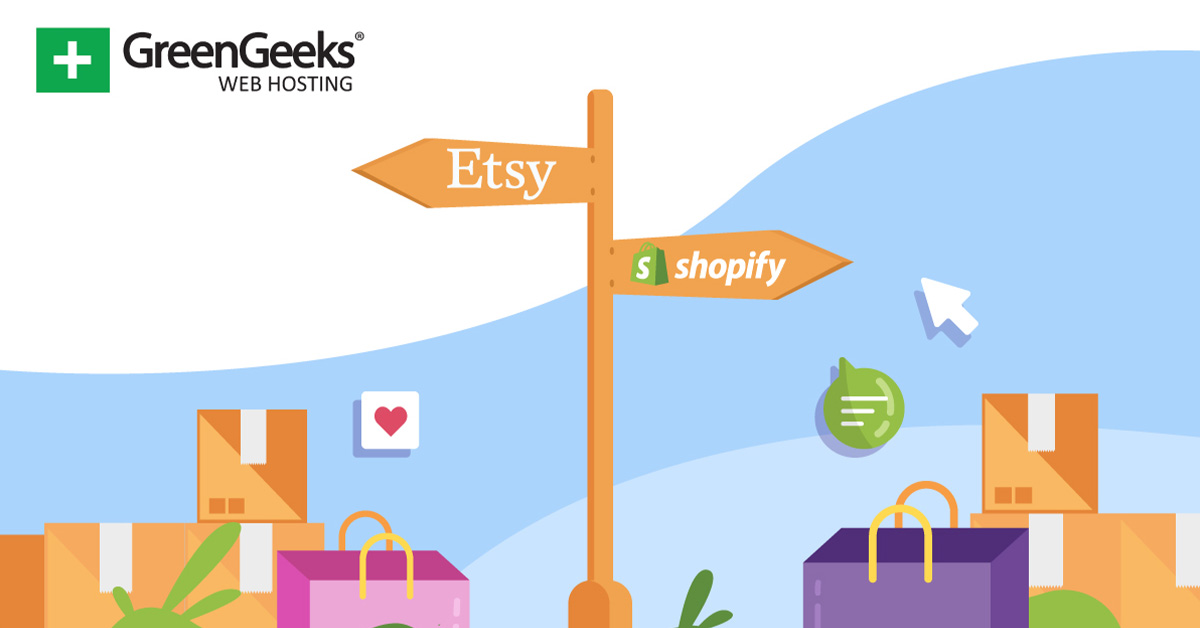
Which is Better & Exploring More Options
If you’re planning to build an online store, should you choose between Etsy or Shopify?
The world of eCommerce is booming, with online retail becoming a cornerstone of modern business. In 2024, global eCommerce sales surpassed $6 trillion, highlighting the rapid growth and potential of online shopping.
Within the eCommerce landscape, platforms like Etsy and Shopify have become key players, each catering to distinct seller needs. But with their differing strengths and features, which platform should you choose for your online store?
In this article, we’ll provide a detailed comparison of Etsy and Shopify, examining their unique features, advantages, and limitations. Beyond these two major players, we’ll also explore alternative eCommerce platforms that you can choose from.
By the end, you’ll have actionable insights to confidently choose the platform that aligns with your vision for success in the evolving eCommerce world.
Understanding the eCommerce Fundamentals
Before we start comparing Etsy and Shopify, let’s first have an overview of what makes an efficient eCommerce business.
eCommerce starts with three core components: a platform or website, reliable payment options, and an efficient shipping process.
User-friendly interfaces and consistent brand visuals help build trust and loyalty to your customers. Visitors will stop engaging with a site if the content or layout is unattractive. Therefore, your eCommerce business must invest in clear navigation, professional images, and cohesive branding.
Online shoppers also expect quick and safe payment options from your store. A well-structured buying journey on your website can help lower cart abandonment rates, which sit around 70% globally.
An efficient shipping process is equally critical for the success of your eCommerce business. Shoppers now expect fast, reliable, and affordable delivery options. Offering real-time tracking, multiple shipping choices, and transparent pricing enhances customer satisfaction.
Key Factors for Choosing the Right Platform
1. Budget Constraints and Operational Costs
Financial planning is essential when choosing a platform. Many eCommerce solutions charge monthly fees, transaction fees, or listing fees, which can cut into profit margins. Always compare these costs and account for potential add-ons, like premium themes or additional apps, to keep your expenses manageable.
2. Technical Expertise and Ease of Setup
Some platforms are more beginner-friendly, allowing drag-and-drop design and automatic updates. If you lack a technical background, a simpler platform can save you from headaches down the road.
3. Desired Level of Customization and Control
A heavily customizable storefront can help you stand out in a crowded marketplace. This is crucial for businesses that value unique brand identity or offer complex product ranges. Conversely, if you only plan to list a few items without major design demands, a highly flexible platform might be more than you need—and more costly.
Etsy vs. Shopify: A Quick Glance
What Is Etsy?
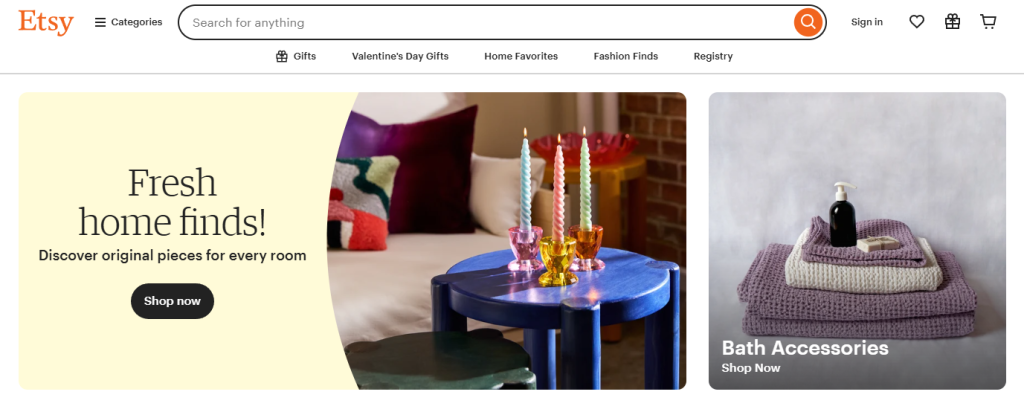

Etsy is an online marketplace that launched in 2005, initially focusing on handmade, vintage, and craft supply products. Its creators aimed to create a space where artisans, small business owners, and hobbyists could share their unique items with a global audience.
Over time, Etsy has evolved into a vibrant community that connects millions of buyers and sellers. Yet it remains dedicated to providing a platform for creative entrepreneurs who want a simpler way to sell their goods.
While it’s not the only marketplace out there, many creators appreciate Etsy’s built-in audience and the ease of setting up shop. The platform’s listing process is straightforward: sellers simply upload photos, set prices, and choose relevant categories and keywords to boost visibility.
Also, Etsy supports a strong seller community by offering forums, webinars, and various educational materials. These resources help new shop owners refine their product listings and learn effective marketing strategies. Because of this communal atmosphere, sellers often find it easier to gain traction and make their first few sales.
However, as we will explore in the Etsy vs Shopify debate, the simplicity of Etsy does come with certain limitations, such as less control over branding and store customization.
Overall, Etsy is a welcoming space for creative entrepreneurs who’d like to focus on perfecting their craft rather than worrying about the technical details of running an online store.
What Is Shopify?


Shopify is a Canadian-based eCommerce solution that officially launched in 2006. Its founders, originally selling snowboarding equipment online, decided to develop a more user-friendly platform after struggling to find existing software that met their needs.
Today, Shopify powers over a million businesses worldwide. It offers a flexible and customizable environment for sellers of all sizes.
Unlike a marketplace setting, Shopify serves as a full-fledged content management system dedicated to online stores. Merchants can build a branded storefront from scratch using drag-and-drop tools.
They can also select from a wide range of themes, and tap into powerful backend features like inventory management, analytics, and CRM. This structure allows you to fully own your brand experience and expand without worrying about sudden rule changes that might affect your listings.
Additionally, Shopify offers different pricing tiers—ranging from Basic to Advanced—so new businesses can start small and upgrade as they grow. This scalability is a major talking point in the Etsy vs Shopify conversation since it affects how sellers handle increased traffic or product lines.
Furthermore, the extensive app store provides countless integrations to enhance various aspects of the online shopping experience. This includes payment gateways, marketing tools, and even customer support services.
Initial Comparison Between Etsy and Shopify
When deciding between Etsy and Shopify, the biggest distinction is that Etsy operates as a marketplace, while Shopify gives you a standalone store.
On Etsy, your products sit alongside countless others, which can help attract buyers who are already browsing the platform. However, your store design must follow the marketplace’s structure, limiting how you present your brand.
Shopify, on the other hand, demands that you bring in your own traffic, yet you have full control over layout, branding, and sales strategies. This difference in audience reach and brand freedom is central to the Etsy vs Shopify debate since it determines how you interact with potential customers and how much creative freedom you possess.
Cost structures also vary. Etsy charges listing fees and transaction fees, whereas Shopify requires a monthly subscription plan plus some transaction fees, depending on the payment gateway you use.
For some sellers, Etsy’s minimal upfront costs are appealing, especially when testing the waters with a few products. Meanwhile, those who plan on scaling quickly might lean toward Shopify’s broader feature set and dedicated storefront approach.
In both cases, it’s crucial to balance factors like ongoing costs, user base, and long-term growth opportunities when selecting the platform that best suits your business needs.
Exploring Etsy in More Details
Now let’s take a look at what Etsy can offer as an eCommerce platform.
Platform Features and User Experience
1. Built-in Customer Base and Community-Driven Platform
Etsy provides sellers with access to a large, engaged audience of millions of buyers who specifically seek handmade, vintage, and craft items. Furthermore, the platform fosters a sense of community through features like forums, teams, and social interaction tools.
Sellers benefit from this active marketplace because they don’t need to build their audience from scratch. The strong community aspect also enhances customer trust, as users often feel they are supporting independent creators.
2. Streamlined Listing System and Tools
Etsy simplifies the process of listing products through an intuitive system. Sellers can easily upload photos, write descriptions, and set prices using the platform’s user-friendly tools.
Additional features, such as category suggestions and keyword prompts, help optimize listings for better visibility in search results. The platform also offers bulk editing options so you can easily manage multiple items.
3. Ease of Setup for Beginners with Minimal Technical Requirements
Etsy is designed with simplicity in mind, making it ideal for beginners who may lack technical expertise. Setting up a shop involves straightforward steps: creating an account, entering shop preferences, and uploading products. The platform provides clear guidance throughout the process, including built-in tips and tutorials.
Additionally, Etsy handles many of the technical aspects, such as payment processing and web hosting, so sellers can focus on running their businesses. This ease of use lowers the barrier to entry for small-scale entrepreneurs to launch their online shops quickly and confidently.
Cost Structure
Types of Fees in Etsy
- Set-Up Fee: Etsy may charge a one-time, non-refundable fee when setting up a shop. This fee is displayed during onboarding and varies by location. In some cases, Etsy may waive the fee during promotional periods.
- Listing Fees: Every listed item incurs a $0.20 charge, valid for four months. Items automatically renew for another $0.20 if they remain unsold unless auto-renew is disabled. Multiple-quantity listings only charge the listing fee when an item sells.
- Transaction Fees: Etsy takes 6.5% of the item price, including shipping and gift-wrapping charges. For sellers outside the U.S., this fee applies to the total amount, including applicable taxes.
- Advertising Fees: For Etsy ads, sellers set a daily ad budget, with costs deducted from their account. On the other hand, offsite ad fees range from 12% to 15% of sales generated via external ad clicks, depending on the shop’s annual revenue.
- Payment Processing Fees: Etsy charges a fee per transaction, which varies based on the seller’s bank location. Currency conversion fees of 2.5% apply when the listing currency differs from the seller’s account currency.
- Shipping Fees: Sellers can buy shipping labels directly through Etsy. Costs depend on the carrier, package weight, and destination. Additional features like insurance incur extra charges.
Etsy Plus Subscription
Etsy Plus is a $10 monthly subscription designed to help sellers grow their businesses with enhanced tools and benefits. It includes 15 listing credits ($3 value) and $5 in Etsy Ads credits per month, which must be used within the cycle as they do not roll over.
Subscribers can also register a free “.store” domain and get 50% off select domain extensions for the first year through Hover.
The plan offers advanced customization options to enhance shop design and branding. Fees renew automatically each month on the same day and can be canceled anytime via Shop Manager settings. After cancellation, the subscription continues until the current cycle ends, then reverts to Etsy Standard.
Target Audience & Ideal Sellers
Etsy is a dedicated platform designed for creators of handmade goods, vintage items, and unique crafts. The platform’s built-in audience of millions of shoppers actively seeks one-of-a-kind items, making Etsy an excellent choice for those offering distinctive products.
Unlike broader platforms like Shopify, which cater to all types of businesses, Etsy is ideal for sellers who focus on artistic, personalized, or niche products. Its community-driven approach encourages sellers to connect with buyers who value handmade artistry and authentic craftsmanship.
Overall, Etsy is the go-to marketplace for individuals or small teams looking for a simple, low-maintenance way to sell curated goods.
Drawbacks of Selling on Etsy
While Etsy provides excellent opportunities for creative entrepreneurs, some factors should be considered when deciding if the platform is the right fit for you.
- High Fees: As mentioned previously, Etsy charges multiple fees, including a $0.20 listing fee, a 6.5% transaction fee, and payment processing fees. Additionally, sellers using optional services like Etsy Ads or Offsite Ads may face higher costs, which can significantly impact profit margins.
- Limited Branding Opportunities: Etsy’s platform emphasizes its marketplace branding over individual shops. Sellers have limited customization options for their shopfronts. This makes it harder to establish a distinct brand identity compared to platforms like Shopify.
- High Competition: With millions of active sellers, standing out on Etsy can be challenging. Competing for visibility often requires heavy use of advertising and optimizing listings, which can be time-consuming and costly.
- Reliance on Etsy’s Algorithm: Seller visibility is heavily dependent on Etsy’s search algorithm. Changes to the algorithm or policies can affect shop traffic and sales, leaving sellers with little control over their shop’s performance.
- Niche-Dependent Audience: Etsy has limited appeal for sellers with broader or unrelated product lines. Businesses selling non-niche items may struggle to find their target audience.
Best Practices To Succeed in Etsy
Prioritize Exceptional Customer Service
Customer service plays a crucial role in your search ranking. Factors like average review ratings, response time to messages, and case resolution rate influence your shop’s visibility.
Leverage the Etsy Search Visibility Page
The Etsy search visibility page in Shop Manager is a valuable tool for optimizing your listings. It provides insights into your shop’s performance in key areas like shop quality, listing details, and customer service. Personalized recommendations guide you on actions to improve visibility.
Use High-Quality Photos
Your first photo is the thumbnail shoppers see in search results, so ensure it stands out. Use a clean background or lifestyle imagery to make your product appealing. Utilize all 10 photo slots to provide additional details, like dimensions and alternate views.
Optimize Tags for Search
Utilize all 13 tags for every listing to increase your chances of appearing in searches. Choose multi-word, natural-sounding phrases that shoppers are likely to search for. You should also add variety to your tags, describing the product, its use, and its audience. Diversified tags provide better visibility for your items across different search terms.
Offer Competitive Shipping Prices
High shipping costs deter buyers, so consider incorporating some shipping expenses into the product price. In Etsy, listings with shipping costs below $6 are prioritized in U.S. searches. The platform’s tools can help you adjust prices to meet buyer expectations while recovering costs.
Use Your Shop Language for Titles and Tags
Your titles and tags must be in the same language you selected during the shop setup. Etsy automatically translates these into other languages for global shoppers, so there’s no need for you to add manual translations.
Enhance Listings with Attributes
Adding specific attributes like color, size, or other characteristics acts as additional keywords for search optimization. Attributes also help match your listings with buyer searches for detailed criteria.
Create Engaging Titles
Start titles with your most important keywords to grab attention. It’s also best to keep titles concise and easy to understand, making it clear what you’re selling.
Add Clear Shop Policies
Transparent shop policies increase buyer confidence and improve your search ranking. Buyers appreciate if they know what to expect from your shop once they purchase the product, and this can lead to higher satisfaction and fewer disputes.
The good thing is that Etsy’s policy template makes it easy to outline return policies, shipping details, and other expectations.
Continuously Refine Your Strategy
Regularly analyze your shop stats to identify underperforming listings. You can refresh tags, titles, and photos based on seasonal trends or major holidays. Experimenting with new keywords and strategies also keeps your shop relevant and helps attract more traffic over time.
Exploring Shopify in More Details
Platform Features and Technical Capabilities
User-Friendly Interface and Themes
Shopify provides over 200 professional themes, both free and paid, made by notable designers that cater to various industries. The intuitive drag-and-drop interface simplifies customization, enabling users to modify layouts, colors, and content effortlessly.
Extensive App Store
The Shopify App Store hosts thousands of applications that extend the platform’s functionality. Merchants can integrate tools for marketing, inventory management, customer service, and more. This modular approach allows for scalability so businesses can add features as they grow.
Robust Inventory Management
Shopify’s inventory system allows merchants to manage unlimited products with ease. Features include bulk product uploads, real-time inventory tracking, and automated alerts for low stock levels. Additionally, the platform supports multiple inventory locations to aid businesses with both online and physical storefronts.
Integrated Payment Processing with Shop Pay
Shop Pay, Shopify’s native payment gateway, offers a secure and efficient checkout experience. It supports various payment methods, including credit cards and digital wallets, while also offering installment payment options.
Not only that, Shop Pay also provides 50% more conversion compared to guest checkouts through its accelerated checkout feature.
Comprehensive Analytics and Reporting
Shopify equips merchants with detailed reports on sales, customer behavior, and marketing campaigns. These insights enable data-driven decisions to help businesses identify trends, measure performance, and optimize strategies.
Advanced reporting features also allow for customization so that merchants can focus on metrics most relevant to their objectives.
SEO and Marketing Tools
Shopify includes built-in SEO features, such as customizable title tags, meta descriptions, and clean URLs, to improve search engine rankings. The platform also offers marketing tools like discount codes, gift cards, and email marketing integrations for a more efficient marketing strategy.
Pricing Models and Fees
Monthly Subscription Plans
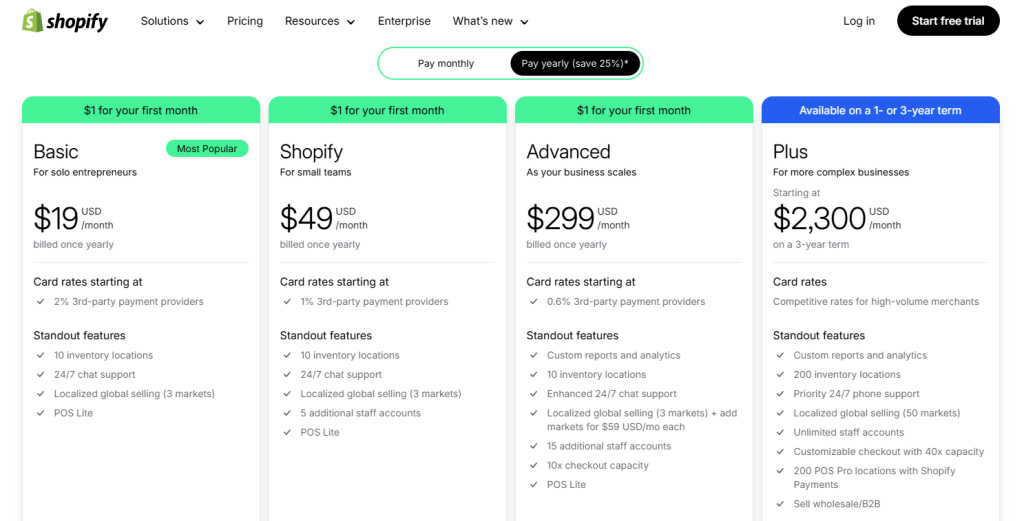

Shopify offers three main pricing plans: Basic, Shopify, and Advanced. Pricing ranges from $19 to $299 per month (paid yearly), with a 25% discount for yearly subscriptions compared to monthly payments.
Although Shopify doesn’t offer a completely free plan, new users can take advantage of a three-day free trial to explore the platform’s features. While the trial is short, it’s supplemented by an introductory deal where users can access their first month for just $1.
Take note that aside from the monthly subscription fee, there are additional hidden fees that you have to take into consideration when choosing Shopify over Etsy.
Transaction Fees and Credit Card Rates
Merchants who don’t use Shopify Payments, the platform’s in-house payment gateway, incur transaction fees on every sale in addition to credit card rates (from 0.6% to 2%). Using Shopify Payments can help you avoid these transaction fees and streamline payment processing.
However, credit card rates still apply, and these depend on your selected Shopify plan (ranging from 2.5% to 2.9% + $0.30 per transaction).
Premium Templates
Shopify offers 13 free themes, but many merchants opt for premium themes to elevate their store’s design. These premium templates range from $100 to $500 as a one-time purchase.
Although they offer advanced customization options, this can be a considerable upfront cost when combined with your Shopify subscription.
Custom Domain Name
To create a professional-looking store, you’ll need a custom domain name, as it’s not included in Shopify plans. Purchasing a domain through Shopify costs around $15 per year for a .com address.
Paid Apps
Shopify’s App Store features over 8,000 third-party apps to enhance your store’s functionality. While some are free, many premium apps require additional fees. These apps can provide valuable features such as advanced analytics, marketing tools, and social media integrations, but they can add up over time.
Who Should Use Shopify?
Shopify is an ideal platform for merchants seeking complete control over their brand identity and store customization. Unlike marketplaces like Etsy, Shopify allows sellers to create a unique online storefront.
For businesses planning to scale or expand internationally, Shopify provides robust tools to support growth. Its infrastructure can handle high volumes of traffic and transactions, making it suitable for scaling operations.
In addition, brands requiring advanced eCommerce features will find Shopify’s offerings comprehensive. The platform supports multiple staff accounts, enabling team collaboration with varying levels of access. Its in-depth analytics also provide valuable insights into sales, customer behavior, and marketing performance.
Drawbacks of Using Shopify over Etsy
- Higher Initial Costs: Shopify requires users to subscribe to a plan starting at $19 per month, whereas Etsy charges no monthly fees for basic usage.
- Steeper Learning Curve: Shopify offers extensive customization options and features, but this can be overwhelming for beginners. Setting up and managing a Shopify store may require more technical knowledge compared to Etsy’s user-friendly setup.
- No Built-In Customer Base: Unlike Etsy, which has a large, ready-made audience actively searching for handmade and vintage items, Shopify requires sellers to drive traffic to their store through marketing efforts like ads and SEO.
- Additional App Costs: Shopify’s functionality often relies on third-party apps to enhance features, many of which are paid. These costs can add up quickly, making it more expensive to operate compared to Etsy.
In Summary: Detailed Comparison of Etsy vs. Shopify
| Metric | Etsy | Shopify |
| Brand Identity and Customization | Limited storefront personalization; strong marketplace branding overshadows personal branding. Suitable for showcasing handmade items with basic customization. | Robust design options allow for a fully customizable storefront. Merchants can create a unique visual identity and tailored customer experience. |
| Marketing and Customer Acquisition | Built-in audience of shoppers seeking unique products reduces the need for extensive marketing. Advertising costs are optional but may be necessary for increased visibility. | No built-in audience; sellers must independently drive traffic through SEO, ads, and promotions. Higher effort and cost but allows for stronger brand loyalty over time. |
| Operational Management | Simpler setup with fewer tools. Taxes and shipping are straightforward but less customizable. Limited integration options for advanced workflows. | Advanced inventory and order management tools; handles taxes, shipping, and customer service with greater flexibility. Thousands of apps available for streamlining workflows. |
| Revenue Potential and Scalability | Best suited for niche products with modest price ranges. Growth is limited by the platform’s marketplace model, which restricts branding and revenue channels. | Ideal for scaling businesses with high revenue potential. Supports multiple revenue channels, global shipping, and cross-border sales strategies for growth. |
| Cost Analysis | No monthly subscription fee for basic usage. $0.20 listing fee per item, 6.5% transaction fee, and additional fees for ads. Lower upfront costs but potentially high cumulative fees. | Monthly subscription starts at $19, with additional costs for premium themes, apps, and marketing. Higher upfront costs but greater scalability and long-term profitability. |
| Ease of Setup | Simple and beginner-friendly, ideal for small-scale sellers. | More involved setup with extensive customization for experienced users. |
| Customer Support | Email support and forums are available, but lack real-time assistance. | 24/7 support through live chat, email, and phone for comprehensive help. |
| SEO and Marketing Tools | Basic SEO tools like tags and attributes; rely on Etsy Ads for visibility. | Has advanced SEO and marketing tools, including blogging and integrations. |
| Target Audience | Focused on buyers seeking handmade, vintage, and unique products. | Serves a wide range of businesses, from small stores to large enterprises. |
| Mobile Optimization | Mobile-friendly platform with a seller app for basic shop management. | Fully mobile-responsive with an app for managing stores and operations on the go. |
Other eCommerce Platforms to Consider Aside From Etsy and Shopify
WooCommerce
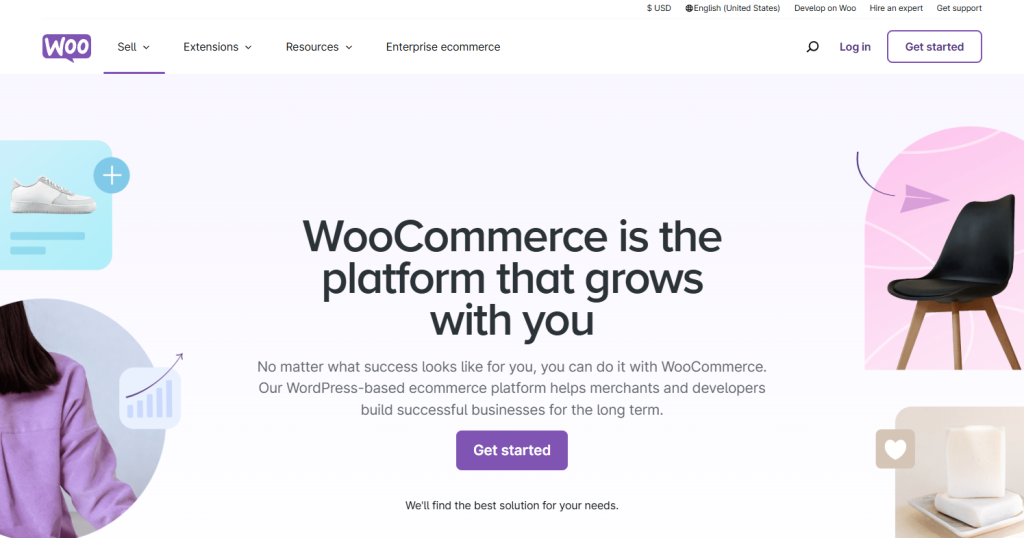

WooCommerce is a versatile, WordPress-based eCommerce platform designed to grow with your business. Trusted by over 4.7 million online stores, it powers 31% of the top 1 million eCommerce sites globally.
WooCommerce offers extensive customization, advanced features, and a marketplace with hundreds of extensions to boost conversions and streamline operations.
Pairing WooCommerce with GreenGeeks WordPress hosting ensures fast, secure, and eco-friendly store performance. GreenGeeks provides optimized hosting for WooCommerce, with tools to simplify setup and improve speed.
This combination allows merchants to build scalable, high-performance online stores while contributing to a sustainable web. It’s a winning solution for long-term success.
BigCommerce
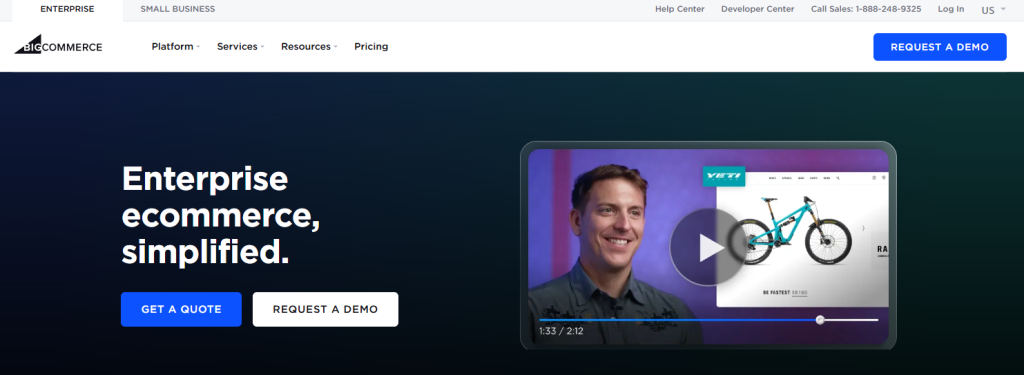

BigCommerce is an excellent alternative to Etsy and Shopify, offering an Open SaaS platform that combines flexibility, scalability, and enterprise-grade tools.
Designed to adapt to your business needs, it provides seamless integrations, advanced customization options, and robust back-office features without proprietary limitations.
BigCommerce optimizes storefront performance through its features like drag-and-drop merchandising, blazing-fast site speed via Google Cloud, and over 70 native discount tools. Overall, the platform delivers a versatile, scalable solution for your modern eCommerce needs.
Squarespace
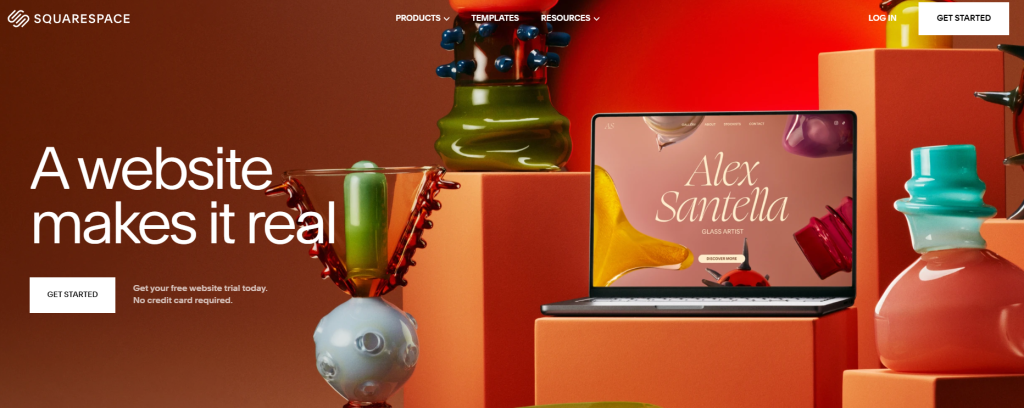

Squarespace is a website builder that offers robust eCommerce capabilities, making it a viable alternative to platforms like Etsy and Shopify. With its intuitive drag-and-drop interface, users can create visually appealing online stores without extensive technical knowledge.
Squarespace provides a range of customizable templates, integrated payment processing, and marketing tools to help businesses establish and grow their online presence. Its pricing plans are also competitive, including features like unlimited products, no transaction fees on certain plans, and advanced analytics.
Wix
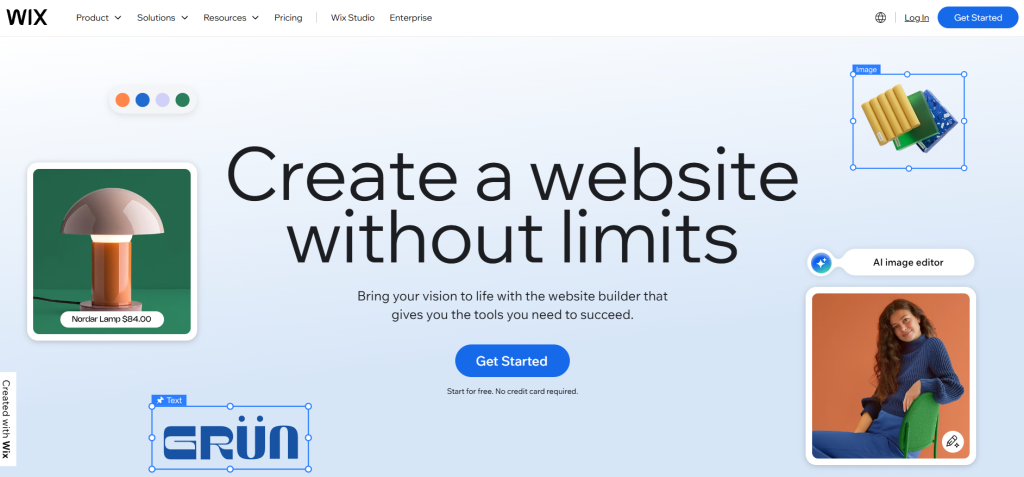

Wix is a user-friendly platform with powerful eCommerce capabilities, making it a strong alternative to Etsy and Shopify. It provides over 900 free, fully customizable templates, including eCommerce-specific designs optimized for mobile and web.
With built-in AI tools and no-code creation, Wix allows businesses to create high-converting storefronts quickly and easily.
Merchants can sell physical, digital, subscription-based, or dropshipped products, all managed seamlessly through one dashboard. Wix also simplifies order processing, payment management, and shipping with integrated tools and discounted carrier rates.
Lastly, Wix’s real-time analytics and automated features like abandoned cart emails help businesses grow efficiently.
FAQs About Etsy and Shopify
Etsy is a marketplace focused on handmade, vintage, and unique items, while Shopify is a customizable platform for creating independent online stores.
Etsy is better for beginners due to its simple setup and built-in audience. Shopify requires more effort to set up and drive traffic.
Yes, many sellers use Etsy for its marketplace exposure while managing an independent Shopify store for full branding.
Shopify offers extensive customization options, whereas Etsy’s customization is limited due to its marketplace structure.
Shopify is better for scaling. It offers tools for global shipping, multi-channel sales, and advanced analytics.
No, Shopify requires you to generate your own traffic through SEO, ads, and marketing.
Etsy is cost-effective for small-scale sellers, while Shopify suits businesses with larger sales volumes and long-term growth goals.
Yes, both platforms are mobile-friendly, but Shopify offers a more advanced mobile shopping experience and store management app.
Final Thoughts
Why choose between Etsy and Shopify when you can use both?
In reality, many successful sellers use Etsy for its built-in audience while building a Shopify store for full brand ownership and scalability. This dual approach leverages the strengths of both platforms, maximizing visibility while fostering long-term growth.
Platforms like WooCommerce, BigCommerce, Squarespace, and Wix further expand your possibilities. The best choice ultimately depends on your products, goals, and vision for the future.
eCommerce is evolving, and your success depends on adaptability and informed decisions. Take time to evaluate your needs, experiment with options, and create a strategy that aligns with your aspirations.
Whether you thrive within Etsy’s niche marketplace, forge your brand on Shopify, or explore other innovative platforms, the path you choose today can define your business success in the future.







